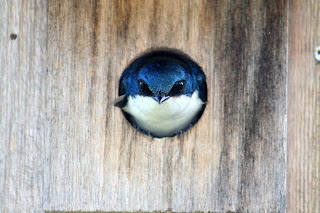An Ox Beetle. Taken July 7th in a grassland in Ocean Co., NJ.
This (if my ID books and bugguide.net have steered me right) is an ox beetle (Strategus anteus). I've seen a lot crawling around sandy bare areas of my Ocean County grassland lately. It is one of 5 ox beetles (Strategus sp.) in the US and the only one (at least the only common one) that lives in the Northeast. Bugguide.net shows it going all the way up to Nantucket Island in Massachusetts. Females (which lack horns) lay eggs in rotting wood, where the larvae develop. Male horns probably serve as some sort of courtship or mate-getting ornament, which is amusing to picture!
Another big beetle (Pasimachus sp., ground beetle family) common in my Ocean Co. grassland. This is a flightless beetle (shell is fused in the middle)! I've found shell remnants below Amercan Kestrel feeding perches. (Photo taken June 22.)
The sandy soils of south Jersey seem to support lots of really big insects. I've seen several other kinds of 1-2 inch beetles (including other dung beetles) crawling around between the grass tufts. Along with the abundance of over-sized grasshoppers, they seem to provide a main source of food for American kestrels (see
here and
here), and also possibly nighthawks which are common in the Pinelands and apparently eat a lot of beetles...this according to their BNA account and this wonderful Audubon print...










